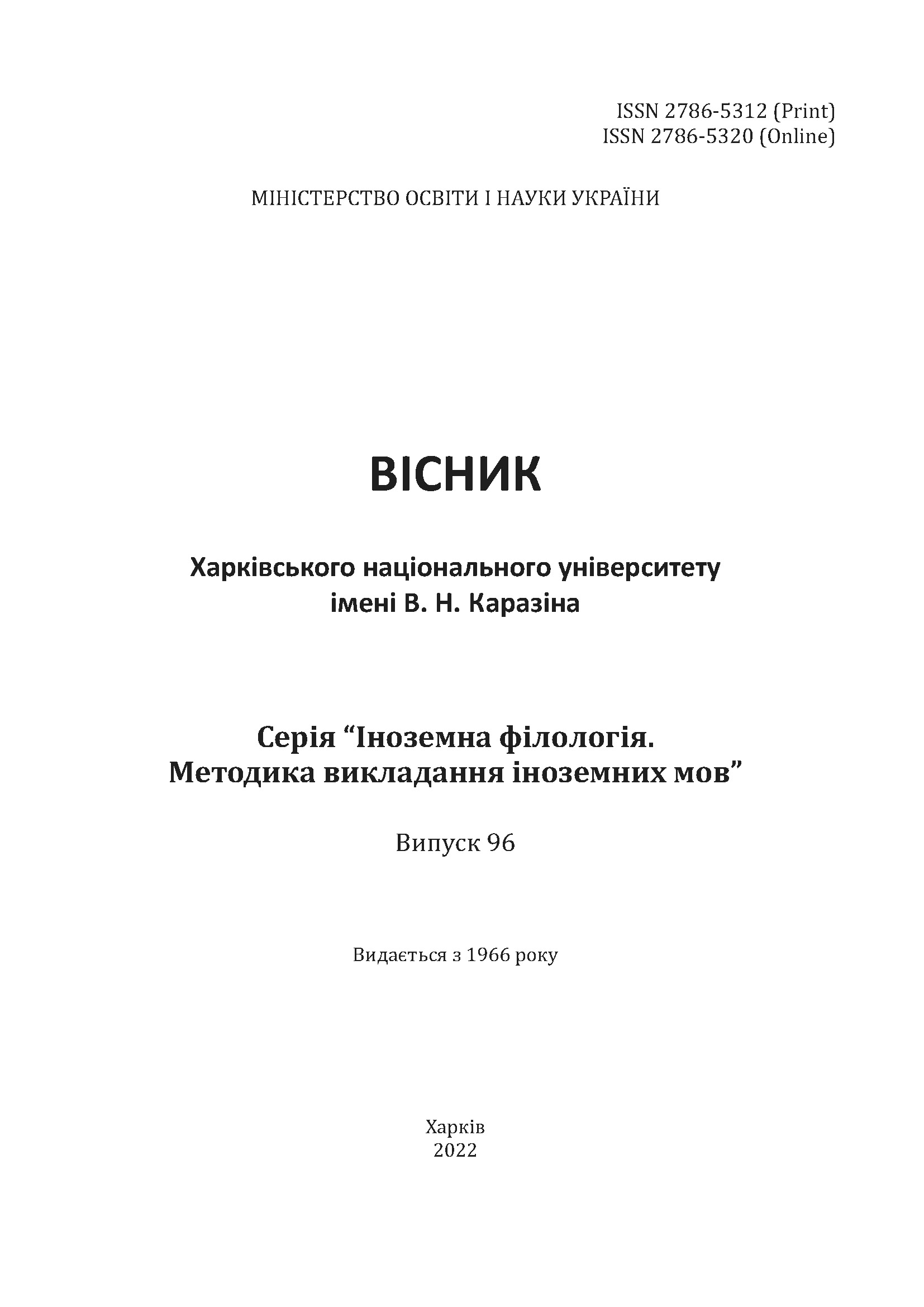Відображення соціокультури у мові, мовленні та художній літературі
Анотація
У статті висвітлено зв’язок соціокультури з мовою, мовленням і художньою літературою, які розглядаються як семіотичні системи, що дозволяє встановити взаємозв’язки між їхніми складовими. Досліджено багатоаспектну підпорядкованість цих систем, яка спостерігається від ментального рівня до мовної реалізації. Показано, як соціокультура виражається в кодах культури, а вони в свою чергу на ментальному рівні відображаються в концептах висловлень і текстів. Схарактеризовано шість основних кодів культури: соматичний, просторовий, часовий, предметний, біоморфний та духовний. На прикладах англійських, німецьких і китайських байок і притч показано дифузність цих кодів, постачання знаків одного коду для посилення іншого.
Подальша реалізація концептів відбувається на мовному рівні. У статті для дослідження такої реалізації використано методику фреймового аналізу концептів та їх атрибутів за допомогою табличних фреймів. Наведено приклади реалізації концептів і їх атрибутів в текстах і в культурі етносу. Досліджено також відображення соціально-історичних та лінгвокультурологічних чинників соціокультури в художній літературі. Відзначено і пояснено на прикладах з англійської, німецької та китайської літератури, що світова художня література може відображати ці чинники безпосередньо або у різному ступені опосередковано. У статті виокремлено три ступені такої опосередкованості. Безпосередньо чинники соціокультури відображаються в історичних романах, більш опосередковано, як фон, – в художніх творах на побутові теми, про життя людей певної соціальної групи. Найбільш опосередковано чинники соціокультури відображаються у малих жанрах літератури (байка, притча та інші) в образно-символічному вигляді. У статті наведено приклади такого образно-символічного відображення. Соціокультура, мова і художня література складають разом гіперсистему, яка є основою існування і розвитку кожного соціуму.
Завантаження
Посилання
Zahnitko, A., & Bohdanova, I. (2017). Linhvokulʹturolohiya: navchalʹnyy posibnyk.. [Linguoculturology: tutorial]. Vinnytsya: DonNU imeni Vasylya Stusa Publ. (in Ukrainian)
Pikhtovnikova, L. S. (2011). Teksty malykh form: Linhvostylistychna interpretatsiya. Dydaktyzatsiya. Pereklad: monohrafiya / navchalʹnyy posibnyk [Texts of small forms: Linguistic interpretation. Didactic teaching. Translation: monograph / tutorial]. Chastyna 1. Mariupolʹ: PDTU Publ. (in Ukrainian)
Pikhtovnikova, L. S., & Honcharuk, O. M. (2016). Anhlomovna prozova bayka : prahmastylistychnyy i linhvokohnityvnyy aspekty : monohrafiya. [English-language prose fable: pragmastylistic and linguistic-cognitive aspects: monograph]. Kharkiv: Kharkivs’kyj natsional’nyj universytet imeni V. N.Karazina Publ. (in Ukrainian)
Pikhtovnikova, L. S., & Motrokhov, A. I. (2017). Kompozitsiya i stil’ rasskaza Yuy Da-fu 春风沉醉的晚上 («Vesenniye nochi») [The composition and style of Yu Da-fu’s story 春风沉醉的晚上 («Spring Nights»)]. Nova fіlologіja [New Philology], 70, 145–149. (in Russian)
Popovych, M. V (1998). Narys istoriyi kulʹtury Ukrayiny [Essay on the history of culture of Ukraine]. Kiev: ArtEk Publ. (in Ukrainian)
Prykhodʹko, A. M. (2008). Kontsepty i kontseptosystemy v kohnityvno-dyskursyvniy paradyhmi. [Concepts and conceptual systems in the cognitive-discursive paradigm]. Zaporizhzhya: Prem‘yer Publ. (in Ukrainian)
Selivanova, O. O. (2006). Suchasna linhvistyka. Terminolohichna entsyklopediya. [Modern linguistics. Terminological encyclopedia]. Poltava: Dovkillya-K Publ. (in Ukrainian)
Chrdileli, T.V. (2018). Linhvokulʹturolohiya. Kurs lektsiy [Linguistic culture. Course of lectures]. Kremenchuk: Kremenchutsʹkyy Natsionalʹnyy universytet imeni Mykhayla Ostrohradsʹkoho Publ. (in Ukrainian)
Deutsche Fabeln aus neun Jahrhunderten (1991). Hrsg. von K.W. Becker. Leipzig.
Thurber, J. (2008). Fables for Our Time and Famous Poems. NY: Harper & Row Publishers.
画蛇添足. Retrieved from: https://baijiahao.baidu.com/s?id=1717226425961545942&wfr=spider&for=pc




